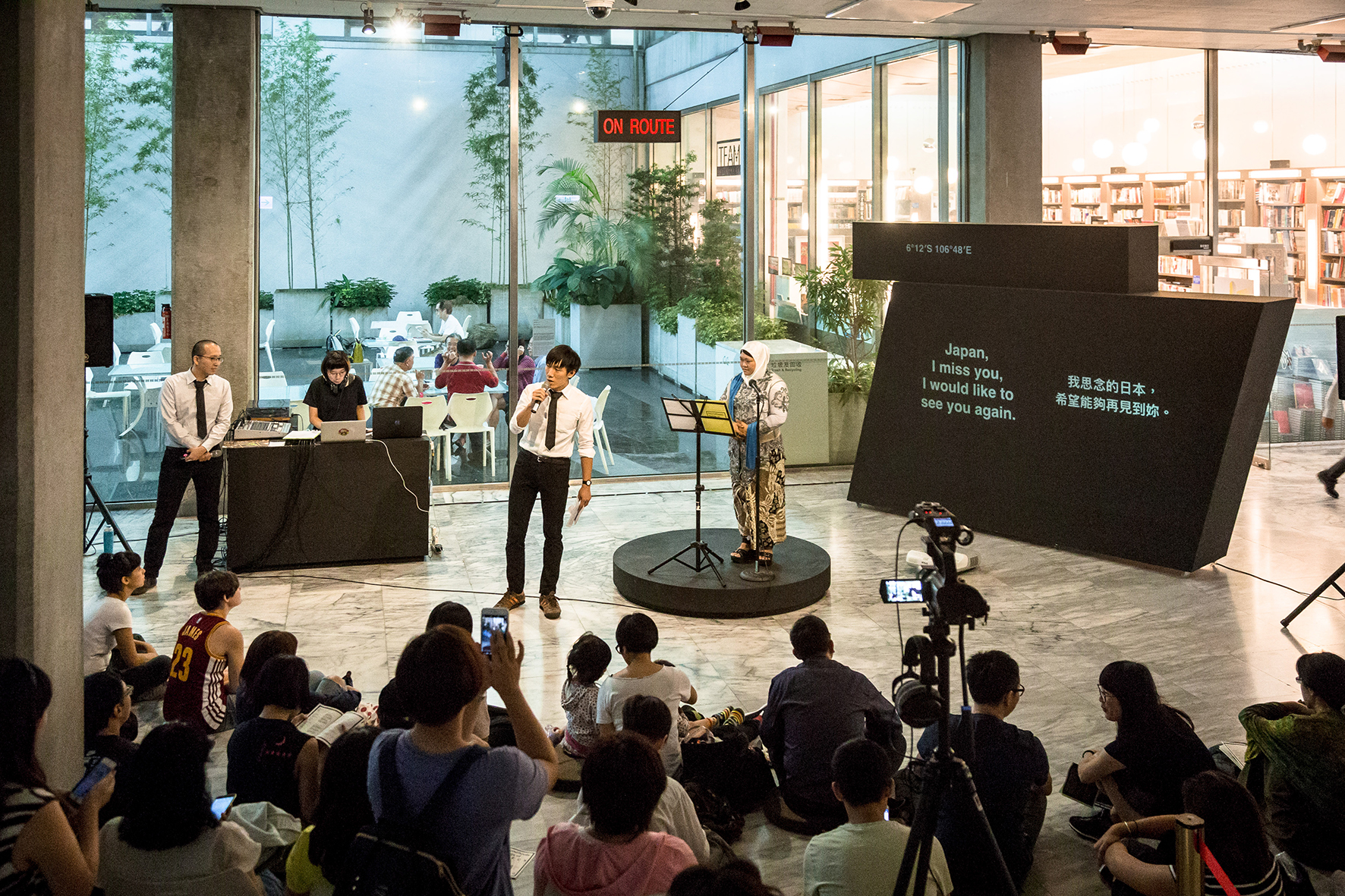Songs of SPECX / 史 貝 克 斯 的 歌
2016
lecture performance
light box, stage, projection, sound samples, 60 min
by Umi Sugiharti, Wu Chi-Yu, Shen Sum-Sum, Musquiqui Chihying
work commissioned by
Taipei Biennial 2016: Gestures and Archives of the Present, Genealogies of the Future


Lecture performance at the Taipei Fine Arts Museum during the Taipei Biennial 2016

Special thanks for the support from Taipei Fine Arts Museum
Related Information ︎
︎︎︎ Taipei Fine Arts Museum
︎︎︎ e-flux
︎︎︎ OCULA
work
The Alp
The Bedroom
The Cable
The Camera (16)
The Camera (17)
The Camera (36)
The Camera (65)
The Chat
The Cultural Center
The Dust
The Figure
The Gate
The Jog
The Lighting
The Link
The Looty
The Map
The Mask
The Postcard
The Route
The Sallow Man
The Sculpture
The Smart City
The Toyota
The Vitrine
collective
Bengawan Solo
Café Togo
Songs of SPECX The Currency-Sensing 01 The Currency-Vinyl The Gesture I
The Gesture II The Guestbook The Sallow Sea
exhibition
Ghost In The Sea Too Loud A Dust
On The Faience Of Your Eyes There Are Lights That Never Go Out I'll Be Back Resistance is Futile
Modern Life is Dull
The Alp
The Bedroom
The Cable
The Camera (16)
The Camera (17)
The Camera (36)
The Camera (65)
The Chat
The Cultural Center
The Dust
The Figure
The Gate
The Jog
The Lighting
The Link
The Looty
The Map
The Mask
The Postcard
The Route
The Sallow Man
The Sculpture
The Smart City
The Toyota
The Vitrine
collective
Bengawan Solo
Café Togo
Songs of SPECX The Currency-Sensing 01 The Currency-Vinyl The Gesture I
The Gesture II The Guestbook The Sallow Sea
exhibition
Ghost In The Sea Too Loud A Dust
On The Faience Of Your Eyes There Are Lights That Never Go Out I'll Be Back Resistance is Futile
Modern Life is Dull